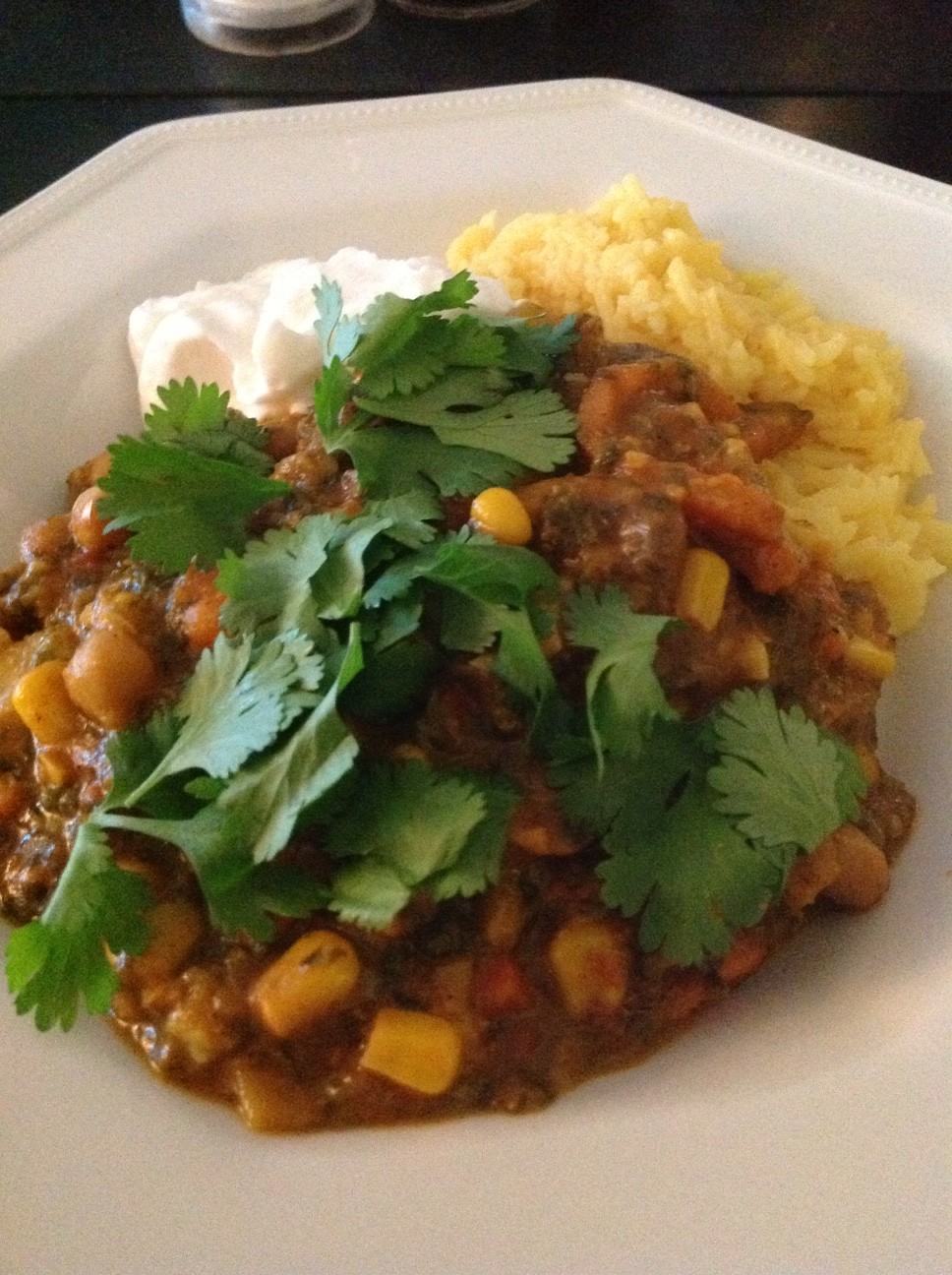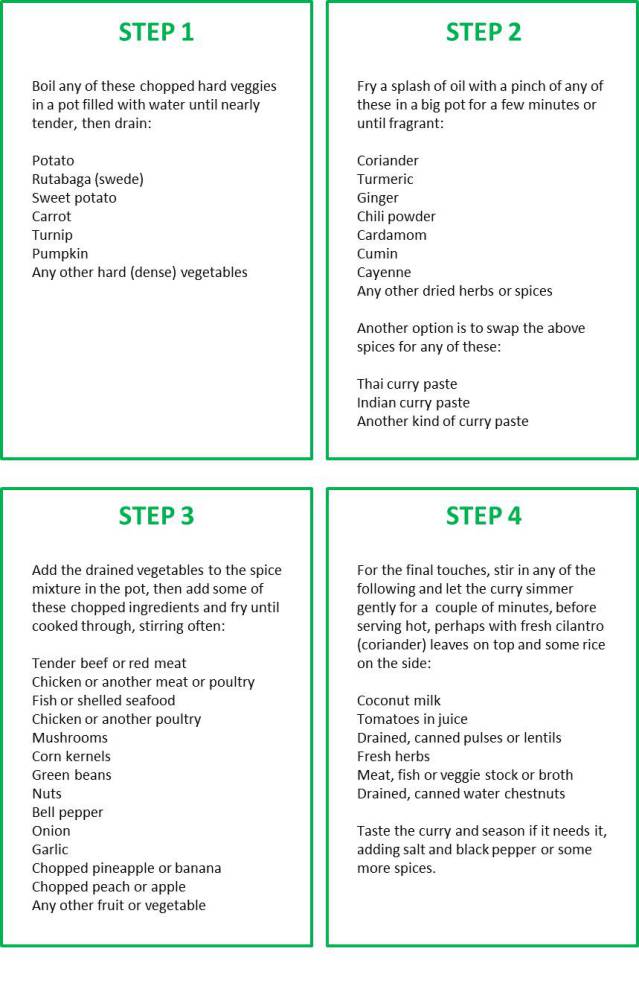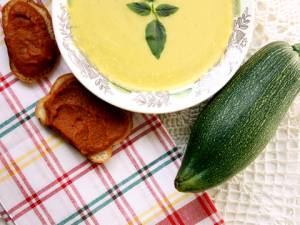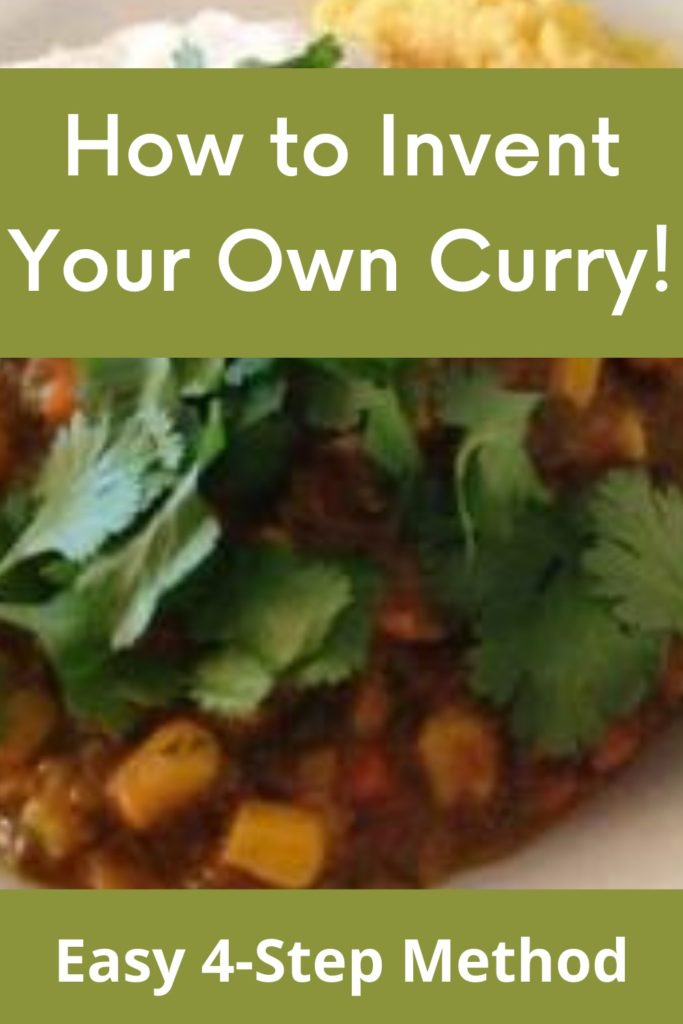Discover how to create a curry recipe. This is a 4-step guide to making curry, and you can make it as mild or as spicy as you wish. Follow the steps learning how to create your own curry recipe and you will end up with the most delicious dish.
There is nothing to worry about when making such a dish and it is best to get creative. So read through this to find out the 4 stages of curry making, then get yourself into the kitchen and prepare something wonderful – no need to follow any recipe to the letter!
Step 1 in this how to create your own curry guide is all about softening any dense ingredients which will take a long time to tenderize. If you are using tough cuts of meat then you can also par-cook those in another pan.
Step 2 in our how to create your own curry guide is about getting the initial flavor of your curry ready and you may choose from any of the spices or seasonings or just use a tablespoon or two of ready-made curry paste if you prefer.
Table of Contents
How Much of Each Ingredient?
When learning how to create your own curry, remember there are no quantities because you should go by taste. Add a little of something and taste. Add a little of something else and taste now.
Remember you can always add more of the hot stuff later. It’s harder to make it less spicy (although possible by adding a pinch of sugar or some other non-spicy tastes) than to up the spice, so don’t just throw in a load of curry powder or chilies and then think… wooooah! Take it easy and add things bit by bit.
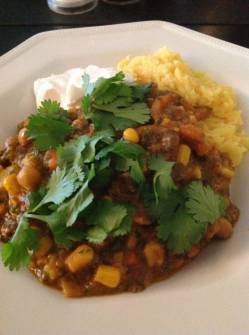
I like to add a banana at this point too because it ‘melts’ into the curry and gives it a sweet flavor.
How to Create Your Own Curry: The Final Touches
Step 4 in this how to create your own curry recipe is the finishing touches and where you should taste the curry and see whether anything is lacking.
This might seem like an unusual way of making a curry, or making any dish for that matter, but you should trust yourself to get the measurements and quantities right, and you aren’t going to ‘ruin’ the curry by adding a little more of this or a bit more of that. Just enjoy the experience and let your imagination guide you to try blending new flavors.
Once you have made a curry in this way you will be keen to try new flavors. I usually make mine in a pot but you can use a large skillet if you prefer.
You can even use a crockpot but if you are going that route then just dump all the ingredients in there and cook the curry on LOW for about 8 hours. Anything which doesn’t require cooking or which doesn’t do well in the slow cooker (fresh herbs, eggs or any kind of fat) can be omitted or added at the end.
How to Create Your Own Recipes
There are various methods you can use to create recipes. Most people learn to cook either from their mother or other family members or from cookbooks but different cooks have different styles. Learn how to create your own curry and you will be able to use that knowledge to create other recipes.
Some people stick rigidly to a recipe, following every step and worrying if they are missing one of the ingredients, even if it is a minor one. Other home cooks are happy to experiment and don’t even mind the occasional culinary disaster.
How to Create Your Own Curry: Use Your Existing Knowledge
How do you invent a recipe for curry? Well, the ultimate key to creating a successful dish is basing the recipe on something you have prior experience with.
That means if you have made successful soup recipes in the past, you are ready to create your own soup, or if you have made your own bread you might like to try a new bread recipe.
If you have never made a pie from scratch in your life, you might prefer to follow a few pie recipes and then you will be better equipped to designing your own recipe for that.
You know theoretically how to make something so if you know how to make mushroom soup, for example, you can swap the mushrooms for zucchini (courgette) and the result should be something similar.
Of course that isn’t going to work the same with baked goods. You can’t swap the baking powder in a cake for raisins or change the flour to butter ratio, since there are chemical reactions there.
But making a curry and changing the potatoes for sweet potatoes or the corn for edamame or adding a splash of extra hot sauce will be fine.
Here we are taking a new approach to cooking, and that is to break each recipe down into 4 (or less, or more) easy steps. It works with learning how to create your own curry and also how to cook other dishes you will want to make step by step.
At each step you will have the choice of which ingredients you are going to add.
That means an almost endless combination of flavors and fine tuning. You can add any of the suggested ingredients, as many of them as you wish, or substitute your own. Then serve it over rice or a low carb rice alternative.
How It All Works
Making a curry, for example, might sound hard, but if you break it down into 4 steps you will discover it is easy.
First you fry your garlic, onions and spice mix, then you choose your meat, fish and veggies. Next you will add the sauce ingredients and step 4 is where everything comes together.
Take your pick out of the suggested ingredients in each step and you can be sure of ending up with a winning meal.
Making Curry Like You Get in an Indian Restaurant
The following video gives you a good idea of how to make the ‘base’ for a restaurant-style Indian curry, and once you have mastered that technique you will be able to turn that base into your preferred style of curry, using the ingredients you like, and also adding your favorite herbs, spices and seasonings to bring out all the flavors you wish to experience. You can also learn more about the history of Indian cuisine in the UK.
